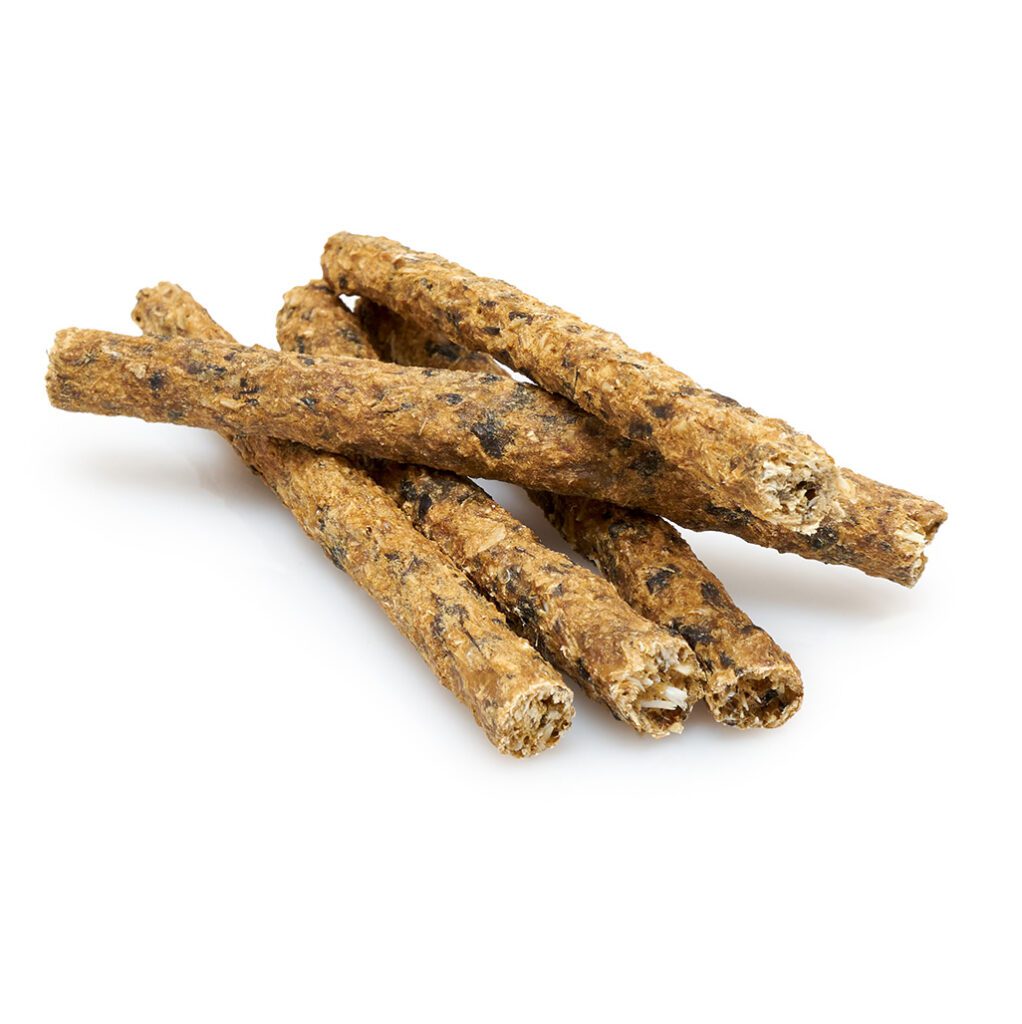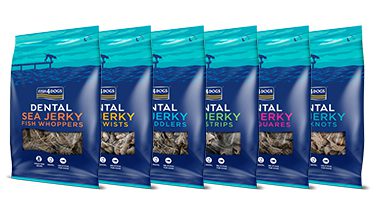Certainly, it seems you’re on the lookout for ways to bring not just a wag but a full-on happy dance to your dog’s day! Unveil a treasure trove of under-the-sea delights with our exclusive Fish Treats For Dogs recipes that promise more than taste. Picture this – each bite delivers a wave of health benefits from the deep blue, directly to your dog’s bowl. Imagine treats so delectable, so rich in Omega-3s, that you notice your furry friend’s coat transforming into a shiny, luxurious mane, improving joint mobility and bolstering the immune system. This approach will shape the trajectory of your dog’s health.
Whether you opt for homemade or store-bought, understanding the right types of fish, the benefits they bring, and how to properly incorporate these treats into your dog’s dietary routine can make all the difference. Join us as we dive deeper into why fish treats for dogs are the perfect addition to a balanced diet, ensuring your beloved pet enjoys both the taste and the health advantages these treats provide. So, let’s explore the world of fish treats together and discover why we call them “pawesome”! Happy reading!
Types of Fish Treats for Dogs;
Your furry friend’s happiness and good moods are directly proportionate to your peace of mind and, tranquility of soul. When it comes to choosing fish treats for dogs, not all types of fish are created equal. Some may contain higher levels of mercury or other harmful substances that can be dangerous for your pet’s health. It is essential to know which types of fish are safe and healthy for dogs, as well as how they should be prepared before being given as treats.

Options such as salmon, whitefish, sardines, and cod are excellent choices for dogs. However, it is crucial to remove any bones or seasoning before giving them to your pet. Additionally, while some may argue that raw fish is better for dogs, it is safer to cook the fish before giving it to your pet, as it can contain bacteria or parasites that could cause health issues.
Nutritional Benefits of Fish Treats for Dogs:
You shouldn’t pull your hand back off anything that contributes to your pup’s development and, in this context, ”fish treats” are unquestionable. Fish treats for dogs are not only tasty but also offer a wide range of essential nutrients that contribute to their overall health and well-being. Omega-3 fatty acids, found in abundance in fish, play a crucial role in maintaining healthy skin and coat for dogs.

They can also improve joint health and reduce inflammation in the body, making them beneficial for dogs with arthritis or other joint issues. Additionally, fish treats are an excellent alternative for dogs with food allergies or sensitivities as they are made of simple and easily digestible ingredients. They are also a great source of protein, essential for building and repairing tissues in a dog’s body.
How to Incorporate Fish Treats into Your Dog’s Diet;
There are several ways to incorporate fish treats into your dog’s regular diet. You can mix them in with their kibble, use them as training rewards, or even serve them as occasional snacks. However, it is essential to keep in mind that fish treats should not replace a complete and balanced diet for your dog. It is recommended to consult with your veterinarian to determine the appropriate amount of fish treats based on your pet’s size, age, and overall health. You’ve read the blog post till here; it simply shows your austerity (Seriousness) related to your dog’s health, happiness, and proper growth.
Homemade vs. Store-Bought Fish Treats for Dogs:
While store-bought fish treats for dogs may offer convenience, making homemade treats can have its advantages. Homemade fish treats allow you to control the quality and freshness of ingredients used, ensuring your dog is getting the best possible treat without any added preservatives or fillers. They also give you the freedom to experiment with different flavours and textures that your dog may enjoy. With options like using a dehydrator or oven to cook the fish, making homemade treats can be a fun and easy way to provide your pet with delicious and healthy snacks.

Tips for Choosing High-Quality Fish Treats for Dogs:
When choosing store-bought fish treats for dogs, it is essential to read the ingredient label carefully. Look for products that use simple and limited ingredients, without any added preservatives or artificial flavours. Avoid treats that contain fillers or by-products, as they may not offer the same nutritional value as natural ingredients. It is also a good idea to research the brand and read reviews to ensure you are purchasing from a reputable company. The amount of time you spend on our site reading about dog’s well-being will pay you back in the form of Happiness and fulfilment.
You can also read: Benefits of Slow Feeder Dog Bowl
Additional Tips and Considerations;
While fish treats for dogs offer many health benefits, it is essential to keep in mind a few things before adding them to your dog’s diet. Always supervise your dog while they are enjoying their fish treats to prevent choking or other potential hazards. It is also necessary to switch up the types of fish treats you offer and not rely on one type for an extended period. This will prevent any deficiencies or imbalances in nutrients and ensure a well-rounded diet for your pet. It seeks ”to promote, not hinder, the overall well-being of your furry friend.”

Pros and Cons of Fish Treats for Dogs.
Pros
- High Nutritional Value: Fish treats are packed with Omega-3 fatty acids which are crucial for a dog’s skin, coat, and overall health. They also provide high-quality protein for tissue repair and maintenance.
- Allergy-Friendly: Many dogs suffer from food allergies and sensitivities. Fish treats, being made from simple ingredients, can be an excellent hypoallergenic option.
- Variety and Palatability: Fish treats come in various forms and can be highly palatable for dogs, making them excellent for training and general rewards.
- Healthy Alternative: For dogs with weight issues or dietary restrictions, fish treats can offer a healthier alternative to conventional treats high in calories and artificial ingredients.
Cons
- Mercury and Toxins: Some fish may contain higher levels of mercury or other harmful substances, which could pose health risks when consumed in large quantities.
- Preparation Concerns: Proper preparation is crucial as raw fish can harbor bacteria and parasites. Bones also need to be carefully removed to prevent choking or internal damage.
- Overconsumption: It’s easy to overfeed treats, which can lead to weight gain or nutritional imbalances, especially if the treats are used excessively in addition to a regular diet.
In summary, fish treats for dogs offer a range of health benefits and can be an excellent addition to a dog’s diet when chosen wisely and used in moderation. However, pet owners should be aware of the potential downsides, including the risk of mercury exposure and the need for proper storage. Consulting with a veterinarian can help ensure that fish treats are a healthy part of a dog’s nutritional regimen.
Conclusion;
In conclusion, fish treats for dogs are a fantastic addition to any dog’s diet. They are not only delicious but also offer numerous nutritional benefits that can improve your pet’s health and well-being. Whether you choose to make homemade or purchase store-bought treats, it is essential to consider the types of fish used and read labels carefully. With proper research and supervision, incorporating fish treats into your dog’s diet can be a “pawesome” way to show them love and keep them healthy.
So, we invite you to join us on this journey of discovering the world of fish treats for dogs and give your pet the gift of tasty and nutritious snacks that they will surely love. Let’s keep our furry friends happy, healthy, and satisfied with the help of fish treats – truly a treat worth wagging for! Happy reading! So, let’s explore the world of fish treats together and discover why we call them “pawesome”!
Lastly, always remember to consult with your veterinarian before making any major changes to your dog’s diet or introducing new treats.

Concerns and FAQs;
Can all dogs have fish treats?
Most dogs can safely enjoy fish treats, but it is always best to introduce any new food into your dog’s diet gradually and in moderation. Some dogs may have specific food allergies or sensitivities, so monitoring your dog for any adverse reactions is crucial. Consultation with a veterinarian is recommended before introducing fish treats, especially for dogs with existing health conditions.
How often can I give my dog fish treats?
Fish treats should be given in moderation as a part of a balanced diet. Treats, in general, should not make up more than 10% of a dog’s daily caloric intake. The exact frequency can vary depending on the dog’s size, weight, and overall diet, but it is always wise to start with smaller quantities and consult with a vet for personalized advice.
Are there any fish types that should be avoided in dog treats?
High-mercury fish such as tuna, swordfish, and king mackerel should generally be avoided or offered only in small, infrequent amounts. It’s better to stick with fish known for lower mercury levels like salmon, sardines, and cod. Again, consulting with a veterinarian can provide guidance tailored to your pet’s specific needs.
Can I make fish treats for my dog at home?
Yes, homemade fish treats can be a healthy and rewarding way to treat your dog. Ensure you are using fresh, high-quality fish, thoroughly cooked without any added oils, seasonings, or salt. It’s also essential to remove all bones to prevent choking hazards or internal damage.
How should fish treats be stored to maintain freshness?
Store-bought fish treats should be kept in their original packaging or in an airtight container in a cool, dry place. For homemade fish treats, storing them in an airtight container in the refrigerator can help maintain their freshness for up to a week. You can also freeze them for longer-term storage.
By keeping these FAQs in mind, you can ensure that feeding your dog fish treats is a safe and enjoyable experience. Remember, when in doubt, consult your veterinarian for the best advice tailored to your pet’s individual needs.



1 Comment
Pingback: Open Farm Raw Mix Dog Food: 5 Best Benefits and Secret Guidelines.